
Environmental Engineering Research
Scope & Guideline
Transforming ideas into impactful environmental solutions.
Introduction
Aims and Scopes
- Water Treatment Technologies:
The journal covers advancements in water treatment methods, including novel materials, chemical processes, and biological systems aimed at removing pollutants and enhancing water quality. - Pollution Control and Remediation:
Research in this area emphasizes techniques for controlling and remediating soil, air, and water pollution, including bioremediation, chemical treatments, and the use of innovative materials. - Sustainable Resource Management:
The scope includes studies on resource recovery from waste, life cycle assessments, and the integration of circular economy principles in environmental engineering. - Environmental Impact Assessment:
Papers often discuss methodologies for assessing the environmental impacts of various activities, focusing on risks associated with pollutants and strategies for mitigation. - Emerging Contaminants and Microplastics:
The journal includes research on the detection, behavior, and removal of emerging contaminants, including pharmaceuticals and microplastics, in various environmental media. - Renewable Energy and Waste Management:
Studies related to the conversion of waste to energy and the application of renewable energy technologies in environmental engineering are also a significant focus.
Trending and Emerging
- Advanced Oxidation Processes (AOPs):
AOPs for wastewater treatment are increasingly featured, showcasing their effectiveness in degrading complex pollutants and pharmaceuticals, aligning with global sustainability goals. - Biochar and Biomass Utilization:
Research on biochar and other biomass materials as adsorbents and soil amendments is trending, highlighting their role in pollution remediation and carbon sequestration. - Integration of Machine Learning and AI:
The application of machine learning and artificial intelligence in environmental modeling and monitoring is gaining momentum, indicating a shift towards data-driven approaches. - Microbial Fuel Cells and Bioelectrochemical Systems:
Studies focusing on microbial fuel cells and bioelectrochemical systems are on the rise, reflecting interest in renewable energy generation and wastewater treatment. - Circular Economy Practices:
There is a growing emphasis on circular economy practices, including waste-to-energy technologies and resource recovery, aligning with sustainable development goals. - Impact of Climate Change on Environmental Engineering:
Research addressing the effects of climate change on environmental systems and engineering solutions for adaptation and mitigation is becoming increasingly relevant.
Declining or Waning
- Traditional Wastewater Treatment Methods:
There has been a noticeable decline in studies focusing solely on traditional wastewater treatment methods, as newer and more innovative approaches gain popularity. - Conventional Air Quality Monitoring Techniques:
Research on conventional air quality monitoring is waning in favor of advanced methodologies utilizing IoT and machine learning for more accurate and real-time data. - Single-Contaminant Studies:
Studies focusing on the removal of single contaminants are decreasing, with a trend towards integrated approaches addressing multiple pollutants simultaneously. - Static Environmental Models:
The reliance on static models for environmental assessments is declining, as dynamic and adaptive modeling approaches are favored for their ability to account for real-time changes. - Basic Chemical Treatment Processes:
Research dedicated to basic chemical treatment processes is less frequent, with a shift towards exploring synergistic and advanced oxidation processes.
Similar Journals

Results in Engineering
Fostering Collaboration and Innovation in Engineering DisciplinesResults in Engineering is an esteemed open-access journal published by Elsevier, dedicated to advancing the field of engineering through high-quality, innovative research. Since its inception in 2019, this journal has rapidly established itself within the academic community, evidenced by its prestigious Q1 ranking in the Engineering (miscellaneous) category for 2023 and a remarkable ranking of #54 out of 307 in General Engineering according to the Scopus database, placing it in the 82nd percentile of its category. Located in the Netherlands, Results in Engineering provides a global platform for researchers, professionals, and students to disseminate their findings and foster collaboration across diverse engineering disciplines. The journal's commitment to open access ensures that valuable research is accessible to a wider audience, fostering innovation and knowledge sharing. With a progressive approach to publication, Results in Engineering seeks to enhance the engineering landscape by publishing cutting-edge studies that address contemporary challenges and solutions in the field.
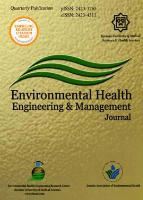
Environmental Health Engineering and Management Journal
Exploring Solutions for Healthier EnvironmentsEnvironmental Health Engineering and Management Journal is a premier platform dedicated to the dissemination of research findings in the essential field of environmental health. Published by Kerman University of Medical Sciences in Iran, this Open Access journal has been a beacon of scientific inquiry since its inception in 2014. With an ISSN of 2423-3765 and E-ISSN 2423-4311, it facilitates broad accessibility to cutting-edge research that addresses the complex interactions between environmental factors and human health. With a notable categorization in the Q3 quartile for Environmental Science and Public Health, alongside Q4 in Chemical Health and Safety, the journal underscores its commitment to quality and relevance. Currently ranked #132 out of 233 in Environmental Science within Scopus, it serves as a crucial resource for researchers and practitioners striving to tackle contemporary environmental challenges. The journal's scope includes innovative methodologies, environmental risk assessment, and sustainable health practices, positioning it as an indispensable reference for those invested in improving public health outcomes through environmental engineering and management.
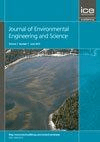
Journal of Environmental Engineering and Science
Exploring Innovative Solutions for a Sustainable FutureJournal of Environmental Engineering and Science, published by Emerald Group Publishing Ltd, is a prominent academic platform dedicated to the dissemination of cutting-edge research in the fields of environmental engineering, chemistry, and science. This journal, with ISSN 1496-2551 and E-ISSN 1496-256X, features a comprehensive collection of studies that delve into innovative methodologies and practical applications aimed at solving pressing environmental issues. Having been published since 2002, it spans critical research years from 2015 to 2024, offering insights that are invaluable to both academics and practitioners alike. With its current rankings placing it in the fourth quartile for Environmental Chemistry and Engineering, and the third quartile in miscellaneous Environmental Science, the journal serves as a significant yet under-utilized resource for emerging scholars seeking to contribute to the ecological discourse. Though it does not offer Open Access, the content is meticulously curated to uphold academic rigor, catering especially to researchers, professionals, and students keen on advancing their understanding of environmental challenges and engineering solutions.
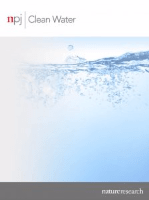
npj Clean Water
Elevating the discourse on water sustainability.npj Clean Water, published by NATURE PORTFOLIO, is a premier open-access journal dedicated to advancing the field of water science and technology. Since its launch in 2018, this innovative publication has quickly established itself as a leading platform for original research and policy discussions concerning clean water access and quality. With an impressive impact factor and categorized in the Q1 Quartile across multiple environmental science disciplines—including management, monitoring, pollution, and waste management—npj Clean Water stands out for its rigorous peer-review process and commitment to disseminating high-quality research. Researchers, professionals, and students involved in water-related challenges will find invaluable insights that address critical environmental issues and promote sustainable practices. Access to articles is freely available, encouraging global collaboration and knowledge sharing within the water sector. This journal embodies a significant step towards achieving innovation and policy advancements in the pursuit of a cleaner, safer water future.
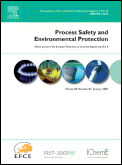
PROCESS SAFETY AND ENVIRONMENTAL PROTECTION
Exploring the intersection of safety, risk, and environmental protection.PROCESS SAFETY AND ENVIRONMENTAL PROTECTION, published by Elsevier, is a premier academic journal dedicated to advancing the fields of chemical engineering, environmental science, and safety management. With an impressive impact factor, this esteemed journal undergoes a meticulous peer-review process and serves as a vital platform for researchers, professionals, and students seeking to disseminate cutting-edge research and innovative practices. Submissions are welcome in a wide scope of topics related to safety, risk, reliability, and environmental engineering, demonstrating its influence as a Q1 journal across multiple categories, including Environmental Chemistry and Safety, Risk, Reliability and Quality. By providing a rigorous analysis of current challenges and solutions in the domain since its inception in 1990, it continues to foster interdisciplinary collaboration and practical applications in the United Kingdom and beyond. With the journal not currently offering Open Access options, subscribers gain exclusive access to pivotal insights that shape industry standards and drive advancements in sustainable practices.
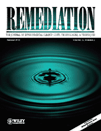
Remediation-The Journal of Environmental Cleanup Costs Technologies & Techniques
Empowering Practitioners with Cost-Effective Remediation StrategiesRemediation: The Journal of Environmental Cleanup Costs Technologies & Techniques is a pivotal publication in the field of environmental engineering, pollution management, and waste disposal. Published by Wiley since 1990, this journal has established itself as a significant resource for researchers and practitioners dedicated to environmental remediation technologies and cost-effective cleanup techniques. With an impressive scope that spans over three decades and continues to evolve until 2024, the journal is recognized for its valuable contributions, reflected in its Q2 ranking in key categories such as Environmental Engineering, Pollution, and Waste Management and Disposal. Although not currently open access, it offers critical insights and scholarly articles that adhere to rigorous peer-review standards, making it a leading forum for sharing innovative research and practical applications aimed at addressing environmental cleanup challenges. Positioned within the competitive landscape of Scopus rankings, it attracts attention from a global audience, ensuring that its findings resonate within academic, governmental, and industrial domains. Researchers, professionals, and students alike will find Remediation an indispensable tool for advancing knowledge and fostering collaboration in environmental sustainability.
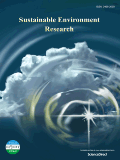
Sustainable Environment Research
Elevating research to combat global environmental challenges.Sustainable Environment Research, an esteemed journal published by BMC, serves as a pivotal platform for disseminating innovative research in the fields of Environmental Engineering, Pollution, and Renewable Energy. Established in 2016 as an Open Access journal, it facilitates the widespread sharing of knowledge and advancements across the globe, reflecting its commitment to enhancing environmental sustainability. With an impressive Q1 ranking in multiple categories, including Water Science and Technology and Pollution, the journal is recognized for its significant impact, currently holding a rank of 31st in Environmental Science - Water Science and Technology. The journal actively invites researchers, professionals, and students to contribute to crucial discussions around sustainable practices and technologies, thus addressing worldwide environmental challenges. Based in Taiwan but accessible internationally, Sustainable Environment Research provides a valuable resource for those dedicated to advancing the science of sustainability.

Advances in Environmental Research-An International Journal
Pioneering Research for a Greener TomorrowAdvances in Environmental Research is an international journal published by TECHNO-PRESS, dedicated to advancing our understanding of environmental science and sustainability. Operating with an ISSN of 2234-1722 and an E-ISSN of 2234-1730, this journal serves as a premier outlet for researchers, professionals, and students aiming to share pioneering research findings, case studies, and reviews that address contemporary environmental challenges. The journal aims to provide a platform for scholarly discussion on a wide range of topics, including pollution control, resource management, and ecological conservation. Though currently classified as a non-open access journal, it remains accessible through various institutional subscriptions, allowing a broad audience to engage with its content. Committed to fostering academic collaboration and innovation, Advances in Environmental Research plays a crucial role in informing policymakers and the scientific community about emerging trends and solutions in environmental studies, making it an essential resource for those dedicated to creating a sustainable future.
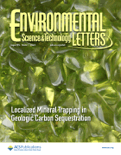
Environmental Science & Technology Letters
Leading the charge in ecological innovation and sustainability.Environmental Science & Technology Letters, published by the American Chemical Society, stands as a premier journal in the realm of environmental science and technology, focusing on pivotal studies that address pressing environmental challenges. With an impressive Q1 ranking in multiple categories including Ecology, Environmental Chemistry, and Pollution, this journal maintains a position of excellence within its field, achieving Scopus ranks that place it in the top percentile of Environmental Science disciplines. Although not open access, Environmental Science & Technology Letters offers vital insights and cutting-edge research that contribute significantly to the understanding and management of environmental issues. The journal’s objectives include disseminating ground-breaking findings and promoting discussions that lead to sustainable solutions. With convergence from 2013 to 2024, it continues to serve as an essential resource for researchers, professionals, and students committed to advancing knowledge and innovation in environmental science.
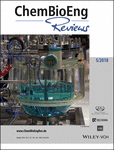
ChemBioEng Reviews
Exploring the Synergy of Chemistry and BiologyChemBioEng Reviews is a premier academic journal dedicated to advancing the fields of biochemistry, bioengineering, and chemical engineering. Published by WILEY-V C H VERLAG GMBH, this journal serves as an essential platform for researchers and professionals seeking to disseminate groundbreaking insights and innovations. With a remarkable impact factor and a solid reputation, it is ranked in the top quartile (Q1) across multiple disciplines, including Biochemistry, Bioengineering, and Industrial and Manufacturing Engineering. The journal's comprehensive scope covers the synthesis, analysis, and application of bioengineered solutions, making it a vital resource for anyone involved in process chemistry and technology. With an unwavering commitment to high-quality scientific discourse from 2014 to 2024, ChemBioEng Reviews is not only pivotal for the academic community but also contributes to industry advancements in filtration, separation processes, and the intersection of chemical and biological engineering.